NAVYPEDIA
 Support the project with paypal
Support the project with paypal
Photo

Itsukushima
Ships
| Name | No | Yard No | Builder | Laid down | Launched | Comp | Fate |
|---|---|---|---|---|---|---|---|
| 厳島 [Itsukushima] | Uraga, Tokyo | 2.1928 | 22.5.1929 | 12.1929 | sunk 7.10.1944 |
Technical data
| Displacement standard, t | 1970 |
|---|---|
| Displacement full, t | 2408 |
| Length, m | 100.0 pp 104.0 wl 107.5 oa |
| Breadth, m | 11.8 |
| Draught, m | 3.22 |
| No of shafts | 3 |
| Machinery | 3 MAN diesels |
| Power, h. p. | 3000 |
| Max speed, kts | 17 |
| Fuel, t | diesel oil 295 |
| Endurance, nm(kts) | 5000(10) |
| Armament | 3 x 1 - 140/50 3-shiki, 2 x 1 - 76/40 11-shiki, 300 mines or nets, 2 DCT (2) |
| Electronic equipment | OV-gata hydrophone |
| Complement | 235 |
Standard scale images

Itsukushima 1941
Graphics
Project history
Built under the 1923 programme. On ship design big effect has rendered by British cruiser-minelayer Adventure. Itsukushima became first large Japanese ship with diesel machinery. She was fitted with closed mine deck with four mine rails for 250-300 big or 500 small mines and can also lay antisubmarine nets.
Modernizations
1938: - 2 x 1 - 76/40; + 2 x 1 - 47/30 Yamaguchi, 2 x 2 - 13.2/76
1941: - 2 x 1 - 47/30, 2 x 2 - 13.2/76; + 2 x 2 - 25/60 96-shiki
1944: + 6 x 1 - 13.2/76, mine capacity was increased to 400 mines; standard displacement was 2330 t.
Naval service
Itsukushima was sunk 7.10.1944 in Java Sea by Dutch submarine Zvaardvis.
 HOME
HOME FIGHTING SHIPS OF THE WORLD
FIGHTING SHIPS OF THE WORLD JAPAN
JAPAN MINE WARFARE SHIPS
MINE WARFARE SHIPS ITSUKUSHIMA minelayer (1929)
ITSUKUSHIMA minelayer (1929)
